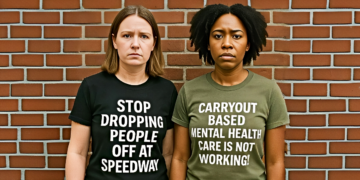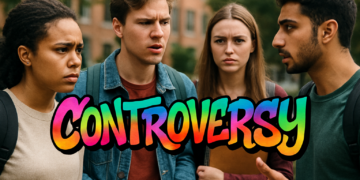Southern Ohio has seen an alarming increase in violent crimes committed by teenage girls. Once considered rare, incidents of assaults, robberies, and even gang-related activity involving young females are becoming more frequent. The question remains: Why is this happening, and what can be done to curb the trend?
The Growing Trend
Law enforcement officials and community leaders have noticed a disturbing shift. While violent crime has traditionally been more associated with young males, statistics now show an increase in the number of teenage girls engaging in aggressive and criminal behavior. In Scioto, Lawrence, and Pike counties, reports of teenage girls involved in fights, armed robberies, and even attacks on law enforcement have been on the rise.
Why Is This Happening?
Several factors are contributing to this rise in violent crime among teenage girls:
- Social Media and Peer Pressure – Platforms like TikTok, Instagram, and Snapchat have amplified the need for attention and validation. Viral “fight videos” and challenges that glorify aggression often encourage young girls to engage in violent behavior for status.
- Family Instability – Many girls involved in violent crime come from unstable homes, dealing with neglect, abuse, or absent parents. Without positive role models, they may turn to gangs or criminal activity for a sense of belonging.
- Mental Health Struggles – Anxiety, depression, and trauma are common among young people, and when left untreated, these emotions can manifest in aggression and criminal behavior.
- Substance Abuse – Drug and alcohol use among teens, often introduced by older peers or family members, can lower inhibitions and lead to reckless decision-making.
- Economic Hardship – Poverty remains a major issue in southern Ohio. With limited job opportunities and financial struggles at home, some teens resort to crime as a means of survival.
What Can Be Done?
While the situation is serious, it is not without solutions. Here are some strategies that can help curb teenage violence:
- Early Intervention Programs – Schools and community groups need to identify at-risk youth and provide mentoring, counseling, and after-school activities that offer positive alternatives to crime.
- Parental Involvement – Encouraging parents to take a more active role in their children’s lives can make a difference. Parenting workshops and family support programs can help strengthen home environments.
- Stronger Mental Health Support – Increased access to counseling and mental health resources in schools and communities can help teens cope with stress and trauma before it escalates to violence.
- Social Media Awareness Campaigns – Educating teens about the dangers of engaging in violent or criminal activity for social media fame can help discourage dangerous behavior.
- Law Enforcement and Community Collaboration – Police departments, schools, and community organizations must work together to develop strategies for prevention, rather than just punishment.




















































































